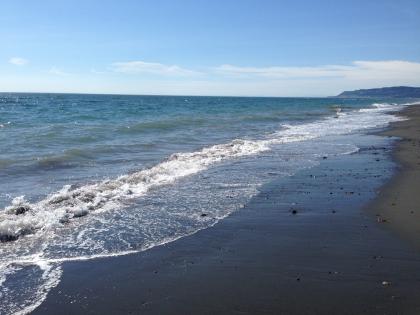
Oil and gas leasing isn’t allowed in Kachemak Bay. The state blocked development there after an oil rig got stuck and leaked oil into the bay in 1976.
But legislation proposed by Gov. Mike Dunleavy would allow the state to sell subsurface gas-only leases in part of Kachemak Bay so oil and gas companies could drill into undersea reservoirs from miles away.
More broadly, the bill would permit subsurface leasing and drilling where surface drilling is currently prohibited. And the bill’s opponents say that would unravel state restrictions meant to protect wildlife.
Haley Paine, deputy director of the Alaska Division of Oil and Gas, told the House Fisheries Committee the point of the legislation is to capture royalties for the state.
“The primary benefit of this bill would be increased revenue,” she said.
Traditionally, oil and gas companies have reached undersea gas reserves with vertical wells from platforms on the ocean’s surface.
But recent drilling technology allows companies to tap into reservoirs in the ocean floor from onshore pads, miles away. Locally, it’s a method BlueCrest Energy already practices to reach offshore oil reservoirs from its Cosmopolitan Unit.
But the state can’t currently profit off subsurface leases in Kachemak Bay, where leasing is prohibited.
The legislation allows for subsurface leasing on a chunk of the bay near Anchor Point. It’s adjacent to the Seaview Unit, where oil company Hilcorp has prospects.
Hilcorp hasn’t yet made plans for any subsea expansion there. But the state wants to establish a lease program to collect royalties in the event that they do, said Sean Clifton from the Alaska Division of Oil and Gas. In Cook Inlet, those royalties hover around 12.5%.
“We’ve seen a lot of new lease activity in this area as Hilcorp has been looking for new places to develop gas in order to keep our homes warm and the electricity running,” Clifton said.
The area was closed to drilling in the first place in part because of fears about harming local fish and fishermen. The state says subsurface drilling won’t hurt local fisheries and that surface development will still be prohibited.
But Penelope Haas, a member of the Kachemak Bay Conservation Society’s board, worries activity in the bay could still adversely impact local wildlife.
“This lateral drilling technology and the fracking that goes along with it can go six miles or more into areas that are currently closed,” she said.
Not all directional drilling is fracking. But the two often go hand and hand.
Haas said that brings concerns about large-scale water withdrawals, impact to local watershed and potential flowback at fracking sites. The state, for its part, said fracking can be done safely and is already practiced in Cook Inlet, with oversight from the Oil and Gas Conservation Commission.
Haas is also concerned about the larger-scale impacts of the legislation.
“We on the second level are very much concerned about an effort by the Dunleavy administration to rewrite the playbook on areas protected from oil and gas drilling around the state,” she said.
Beyond its impact on Kachemak Bay, the legislation allows for subsurface drilling around the state where surface drilling is restricted. Clifton, with the state, said he doesn’t have other examples in mind of where it might apply. But he said the state wants to be ready in case a situation like the one in Kachemak Bay arises elsewhere.
The legislation is among a slate of bills from the governor’s office allowing the Department of Natural Resources to lease and sell land for development. Committees in both the House and Senate are reviewing versions of the bill.




